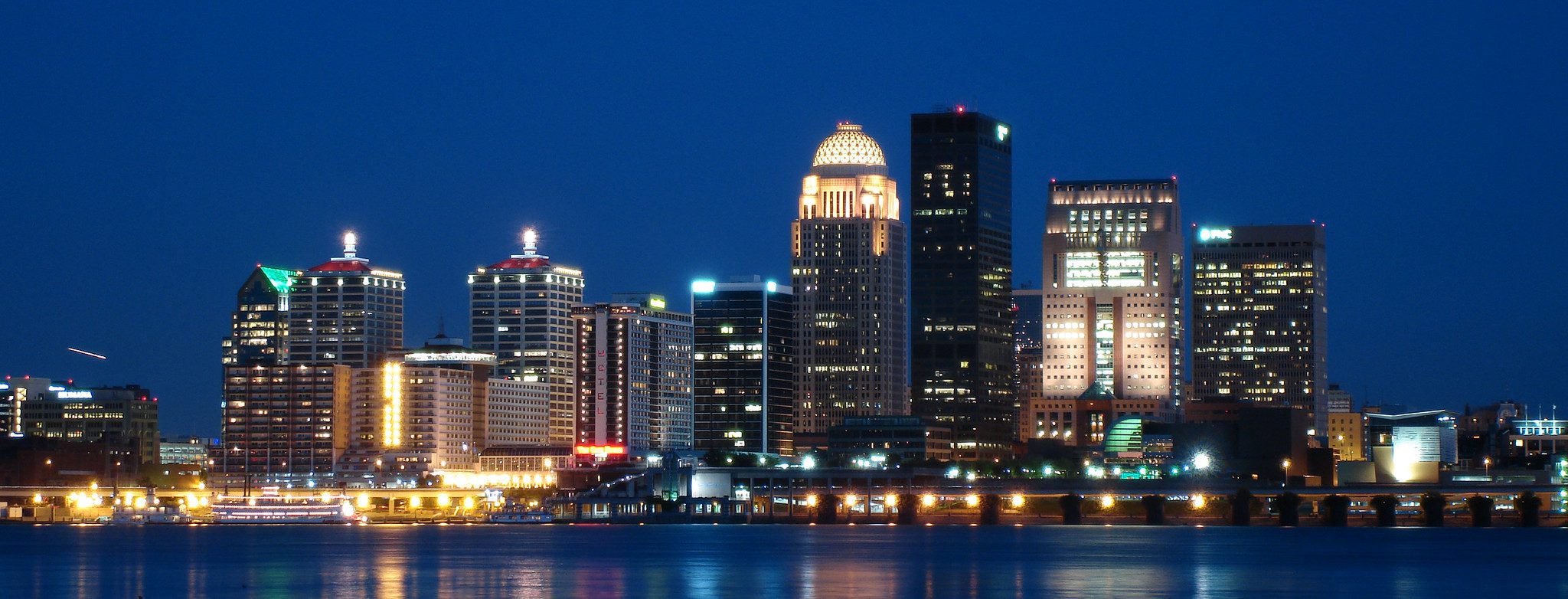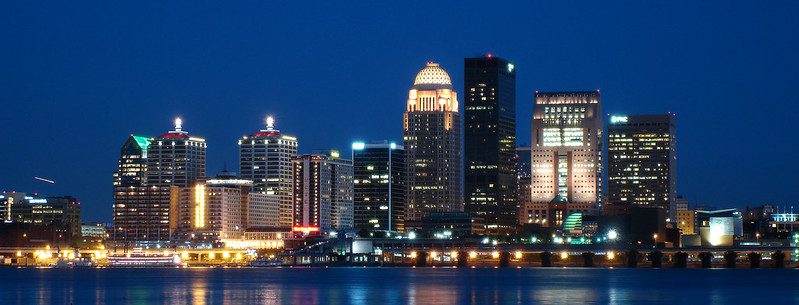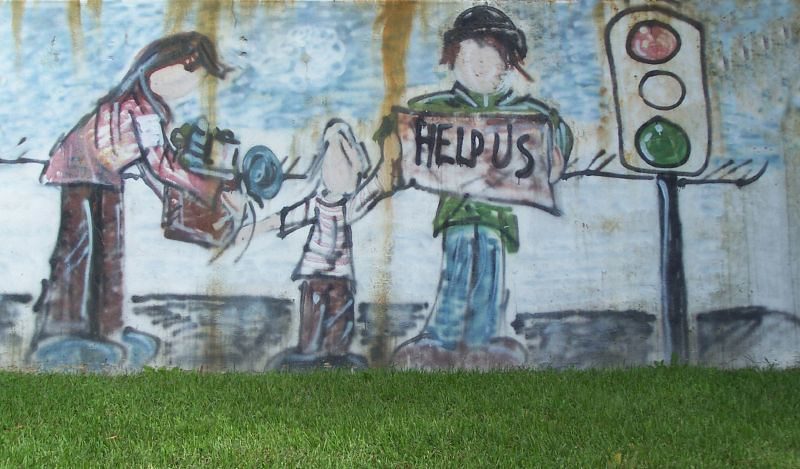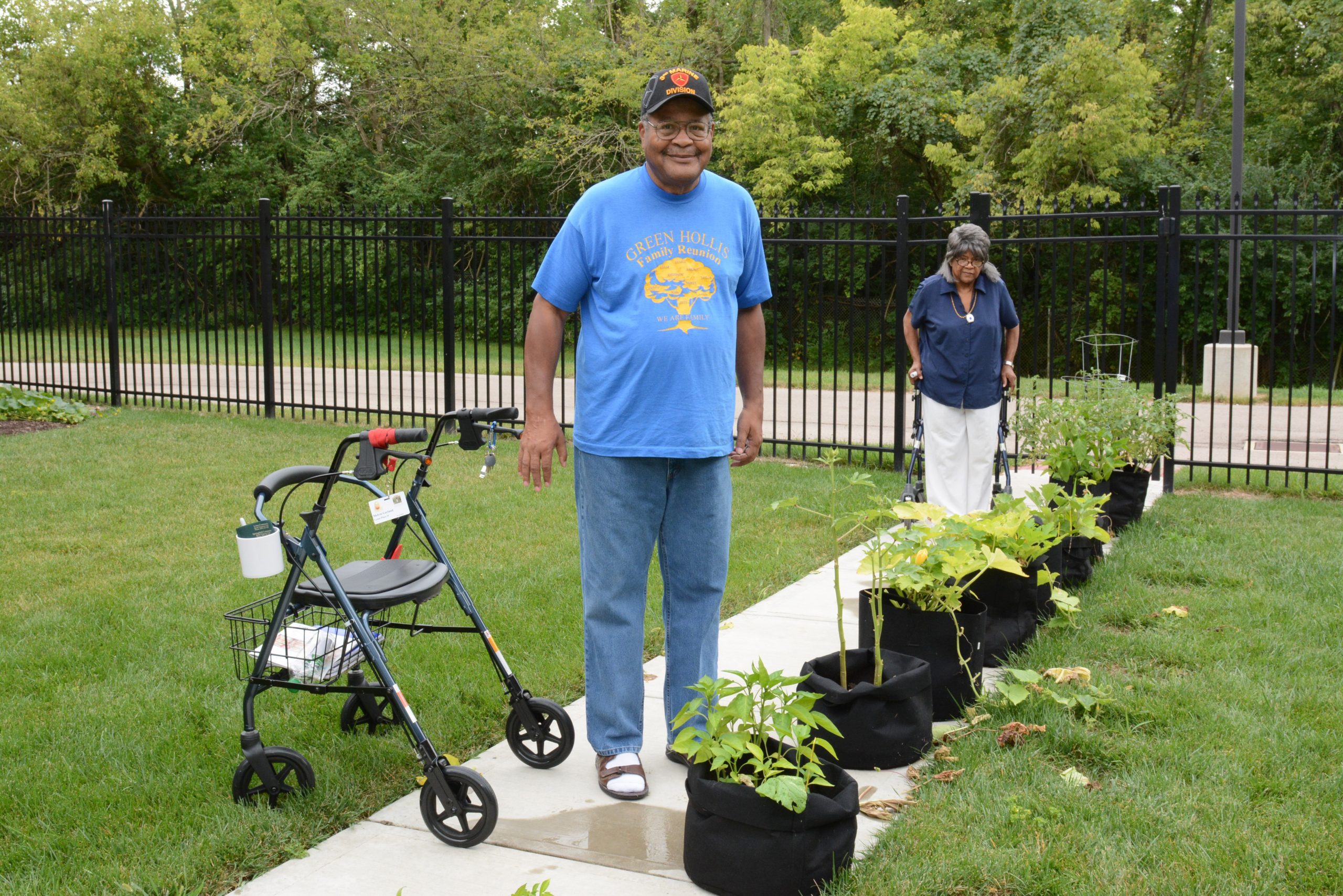
Louisville, Kentucky. Recent studies show that life expectancy varies by 10 years for low-income Black residents who live in neighborhoods adjacent to a chemical industry park known as Rubbertown and low-income Black residents who live in the rest of the city. Photo by Frederick Olson via flickr, CC BY-NC 2.0
As Brown University sociologist John Logan bluntly observed in 2003, “Some neighborhoods are likely to kill you.”
In 2020, we can confirm that some neighborhoods have indeed killed people. Causes include higher crime rates, limited access to health care and healthy foods, and pollution, among other contributing factors. Far too many communities are facing environmental degradation—in air, water, and soil—and the consequences are becoming clearer every day. Shortening of life itself may be the most serious. Low-income men live 5 years less in the five dirtiest mid-size American cities (as measured by the U.S. EPA) than men in the five cleanest, while low-income women in those cities die almost four years earlier. Recent evidence also indicates that those same polluted neighborhoods are COVID-19 hot spots—places like Milwaukee, Detroit, New Orleans, and several other cities around the country.
The tragedy is that these public health disparities do not have to persist. But until our nation’s leadership acknowledges and faces up to this reality, or bottom-up community organizing forces the issue, this tragedy will continue.
Environmental racism has long been evident in cities throughout the nation, even before the 1999 publication of Robert Bullard’s seminal book Dumping in Dixie, which shed light on the fact racial minorities were far more likely to live in neighborhoods exposed to pollution and with the least aggressive cleanup efforts. Louisville, Kentucky, is a typical mid-size city that provides a case study of what is going on around the nation. Recent studies of the social determinants of health in Louisville found that life expectancy is 10 years lower for low-income Black residents who live in neighborhoods adjacent to a chemical industry park known as Rubbertown and low-income Black residents who live in the rest of the city.
These studies, endorsed by Louisville Mayor Greg Fischer (who is now president of the U.S. Conference of Mayors) and local corporate leaders, blamed the disparity on the alleged lifestyle of the poor—they blamed guns, smoking, liquor, diet, and obesity, with a particular emphasis on a lack of education. Sociologists call this “blaming the victim.” Missing from this explanation is the plain reality of the direct effects of environmental degradation: higher rates of asthma, damage to the lungs, shortness of breath, and other respiratory ills.
The harm done by environmental racism has a parallel with the spread of COVID-19 across the United States and the world. The Trump administration’s initial response to the novel coronavirus was to call it the “Chinese virus,” minimize the risks, and assume it would fade away with the spring weather. If instead we had aggressively stepped up the production and distribution of tests, the fears and realities we’re currently experiencing would be quite different. Naming a problem is the first step in solving it, be it the current pandemic or the environmental hazards in Louisville and so many other cities.
In our case study of Louisville, we found that those living near environmental hazards live shorter, less healthy lives—about 10 years less on average—than do other residents of the community, even after accounting for several socioeconomic factors. In our research, to be published this summer in the peer-reviewed urban affairs journal Local Environment, we found that the lives of people who reside within 1.5 miles of EPA-designated brownfield sites or within 10,000 feet of Rubbertown are cut short by their exposure to environmental hazards. Even after taking into consideration the effects of neighborhood racial composition, crime rate, age of housing, and residents’ income, such proximity remained a statistically significant contributor to the loss of years of life for thousands of people.
While a lack of education is statistically associated with years of lost life, it clearly is not a causal factor. A person with a Ph.D. who contracts lung cancer is not less affected than a high school dropout who also has the disease.
It is the case, of course, that better-educated people have more resources and can exercise more housing choices, including living far away from environmental hazards. As a practical matter, the solution to environmental justice won’t come from educating hundreds of thousands of people and moving them out of their neighborhoods. Education is part of a long-term strategy, but an immediate question is what to do for current residents.
The failure of Louisville’s leadership might also help explain why the city generally ranks at the bottom in EPA estimates of air quality among U.S. cities, as reported in a preprint in the medical journal The Lancet. This failure is an even more urgent concern today given preliminary evidence that COVID-19 has greater adverse effects on people who live near toxic sites and particularly on African Americans, who are more likely to reside in such communities in cities around the country. The link between air pollution and COVID-19 has been reported by the Harvard T.H. Chan School of Public Health, while the connections with race have been documented by many scholars and widely reported in the media.
Proximity to environmental hazards and toxic air has not received the proper consideration from political leaders, who must come to terms with the immediate causes of premature death in their communities. As the nonprofit Physicians for Social Responsibility asserts, “We must prevent what we cannot cure.”
Remediating older or abandoned industrial sites and reducing emissions from existing sites can create a cleaner, healthier environment. Environmental remediation is not just a local responsibility. Particularly in light of the current national emergency presented by COVID-19, the president should immediately re-enact more than 95 Obama-era environmental regulations designed to protect U.S. air, water, and soil that have been rescinded by his administration since 2017. Ironically, as noted by Nobel Prize–winner Al Gore on Bill Maher’s April 11 show, gutting environmental protections will only increase the number of deaths related to COVID-19.
It does appear, however, that U.S. political leadership is coming to terms with COVID-19. The president called himself a wartime president, and though he has changed his approach several times since then, many other politicians at state and local levels have remained vigilant during the battle with the virus. We should also be on a war footing with other longstanding environmental hazards. Some places do kill, unnecessarily. The first step is to recognize the killer. Then appropriate action can be taken.
This is a revised and updated version of a piece that appeared in Planetizen on June 20.





Greg Squires article on Pollution, Place, and Unnecessary Tragedy raises a number of significant points about environmental pollution and racism. Louisville is hardly alone in terms of creating negative health outcomes for low-income communities and communities of color.
I have become active in Climate Change work in the San Francisco Bay Area through joining the board of 350 Bay Area, which is at the forefront of connecting climate change to environmental justice. Over 3000 die annually from Particle Matters (PM) in the Bay Area, heavily in low-income communities. Destructive Greenhouse Gas (GHC) emissions is another horrible problem in the Bay Area. Fighting particle matters and GHC requires a combined advocacy and regulatory strategy. On the regulatory front, significant progress has been made in reducing PM through technical analysis and advocacy with the Bay Area Air Quality Management Agency (BAAQMA). There are similar air quality agencies throughout the U.S. that need to be confronted.
Our local work in reducing PM’s near oil refineries and coal stations requires the active involvement of many. Oakland, Richmond, San Pablo, Vallejo and other communities have suffered for too long. A broad based coalition is emerging to reduce and eliminate these toxic facilities, and reducing the amount of coal being shipped in and out of the Bay Area.
Greg Squire’s article helps draw attention to this important body of work.